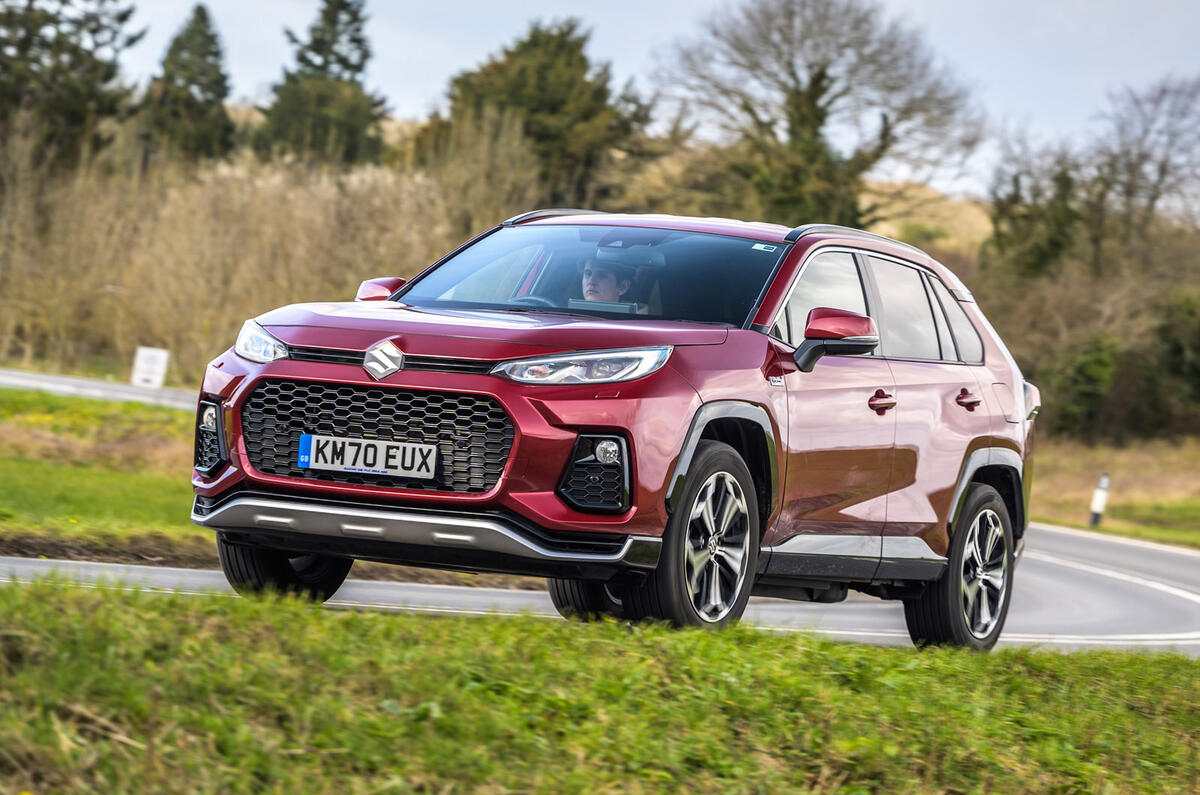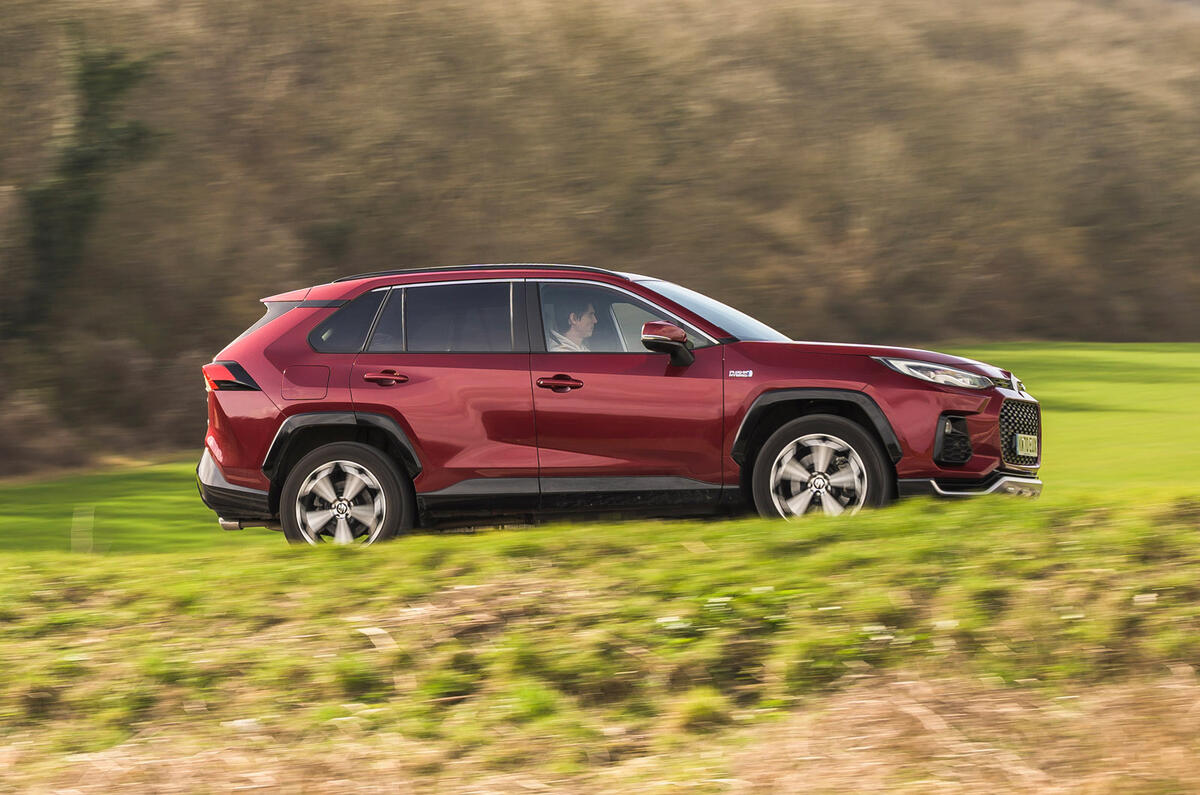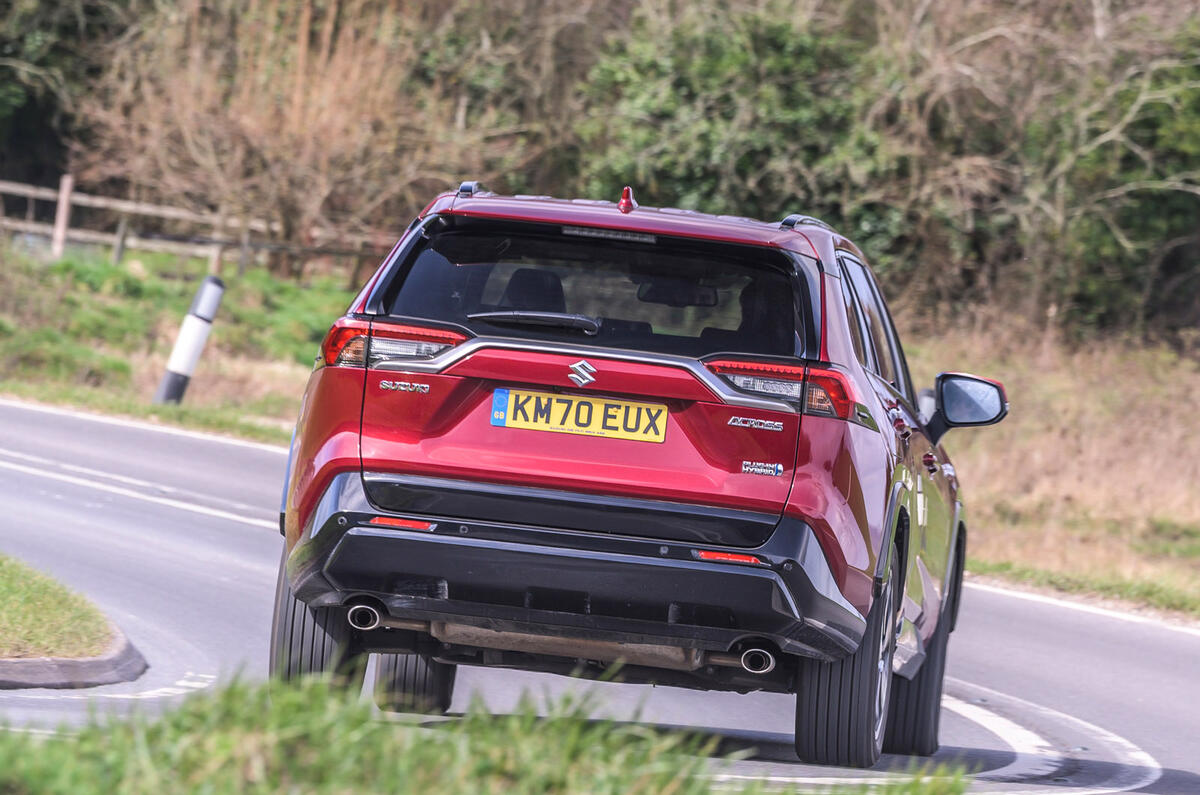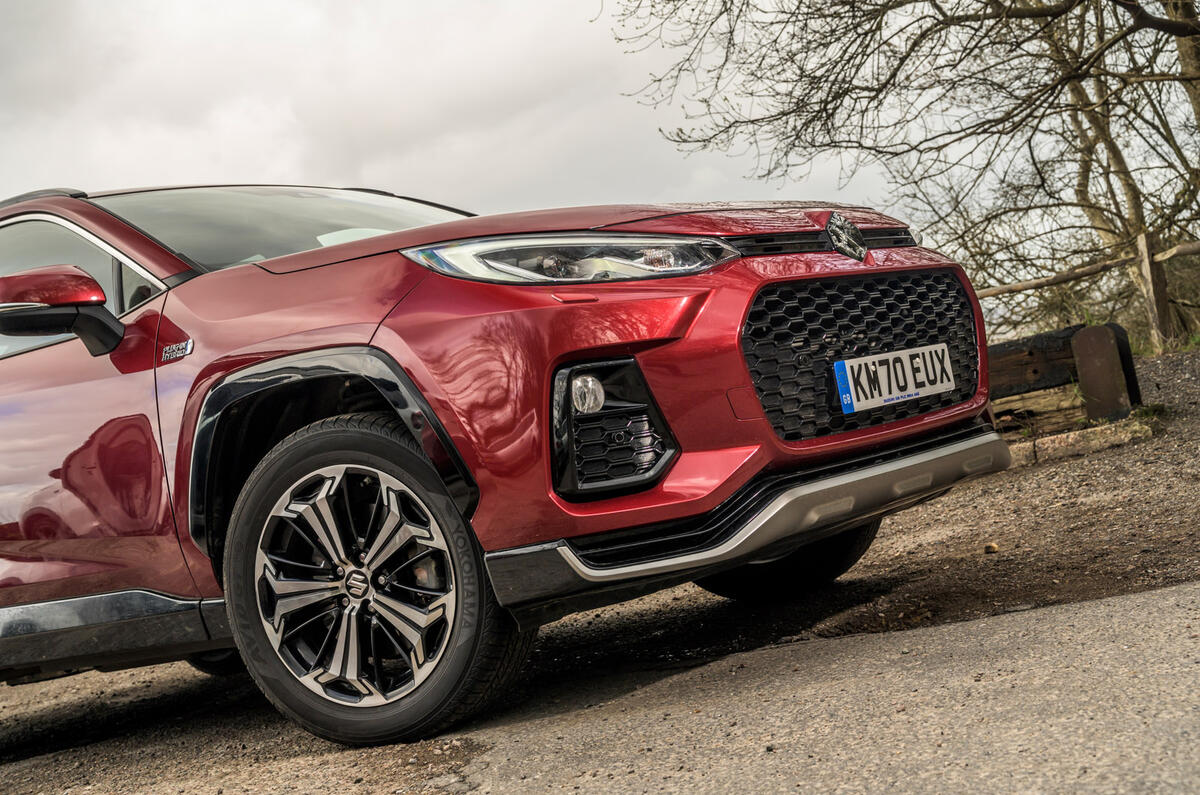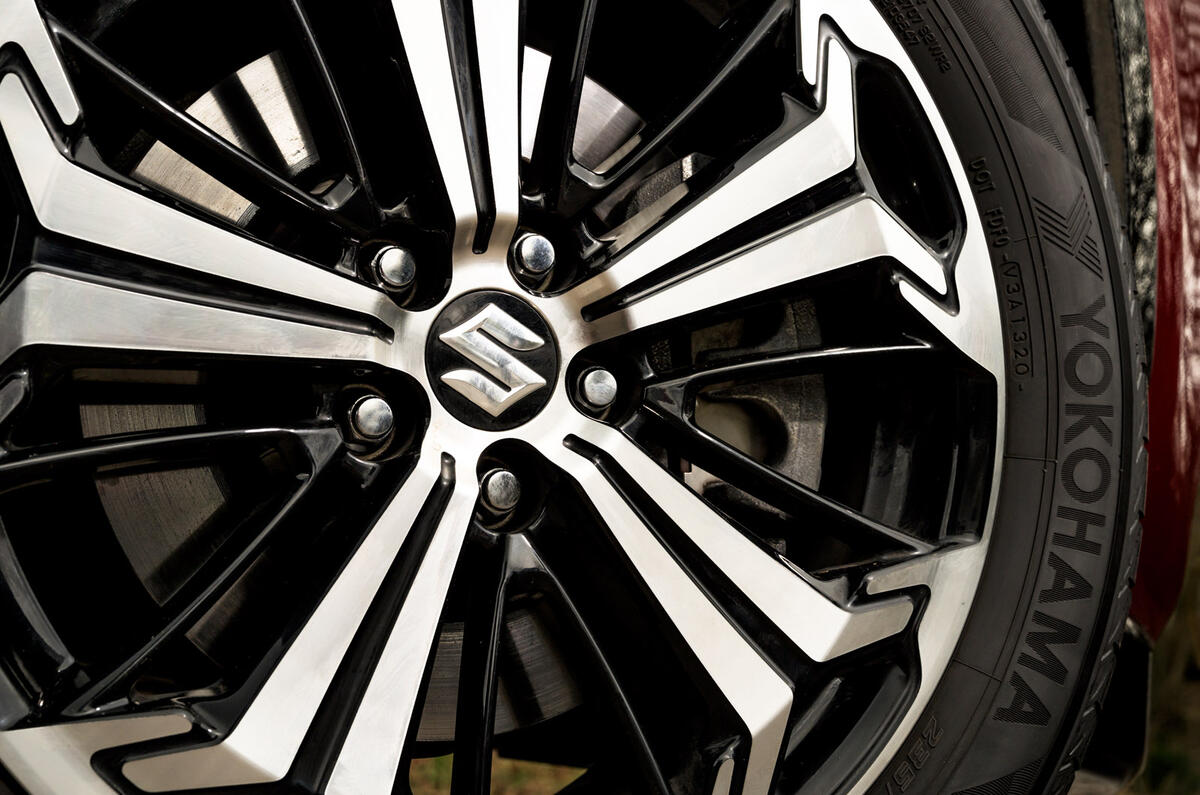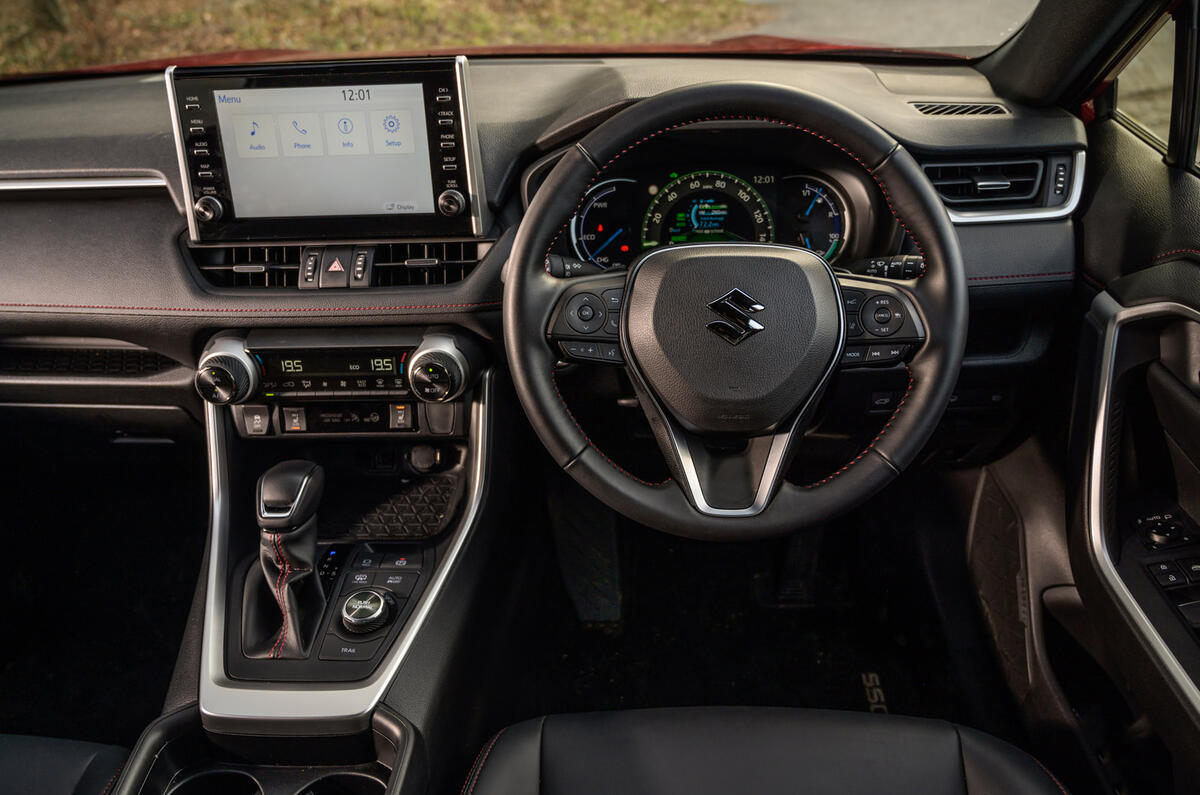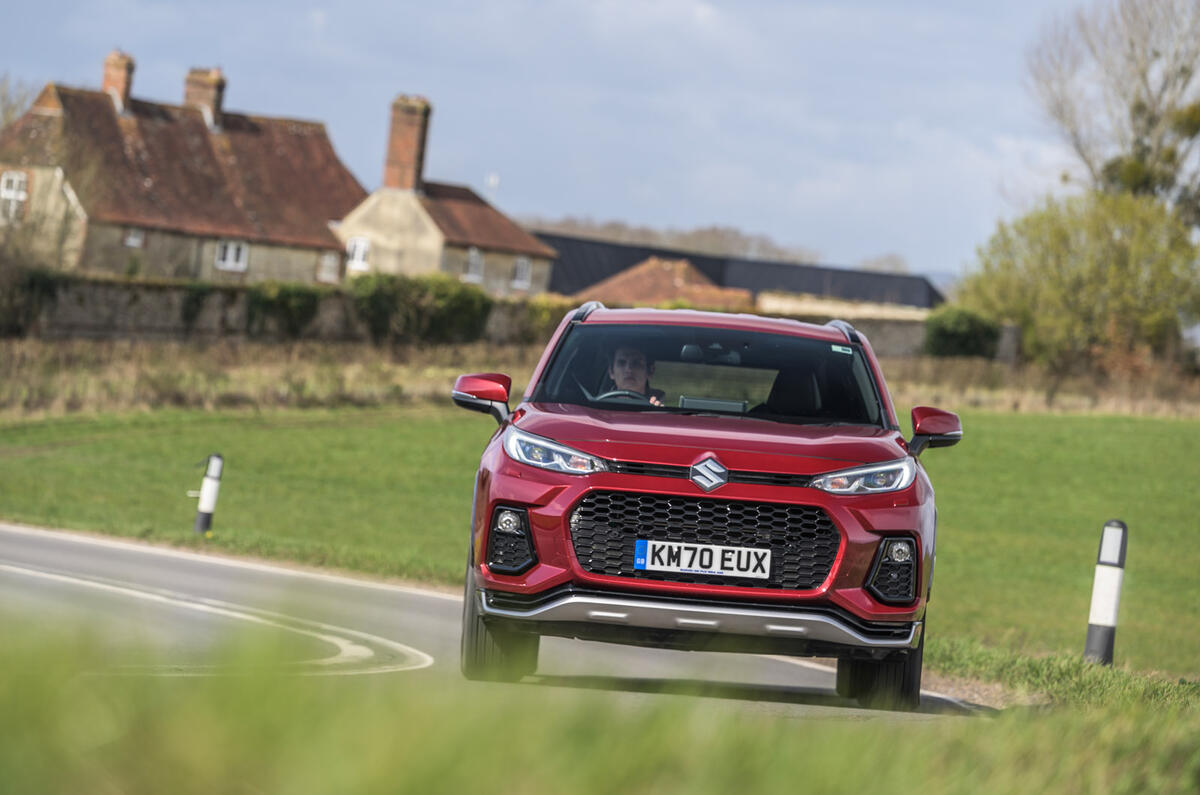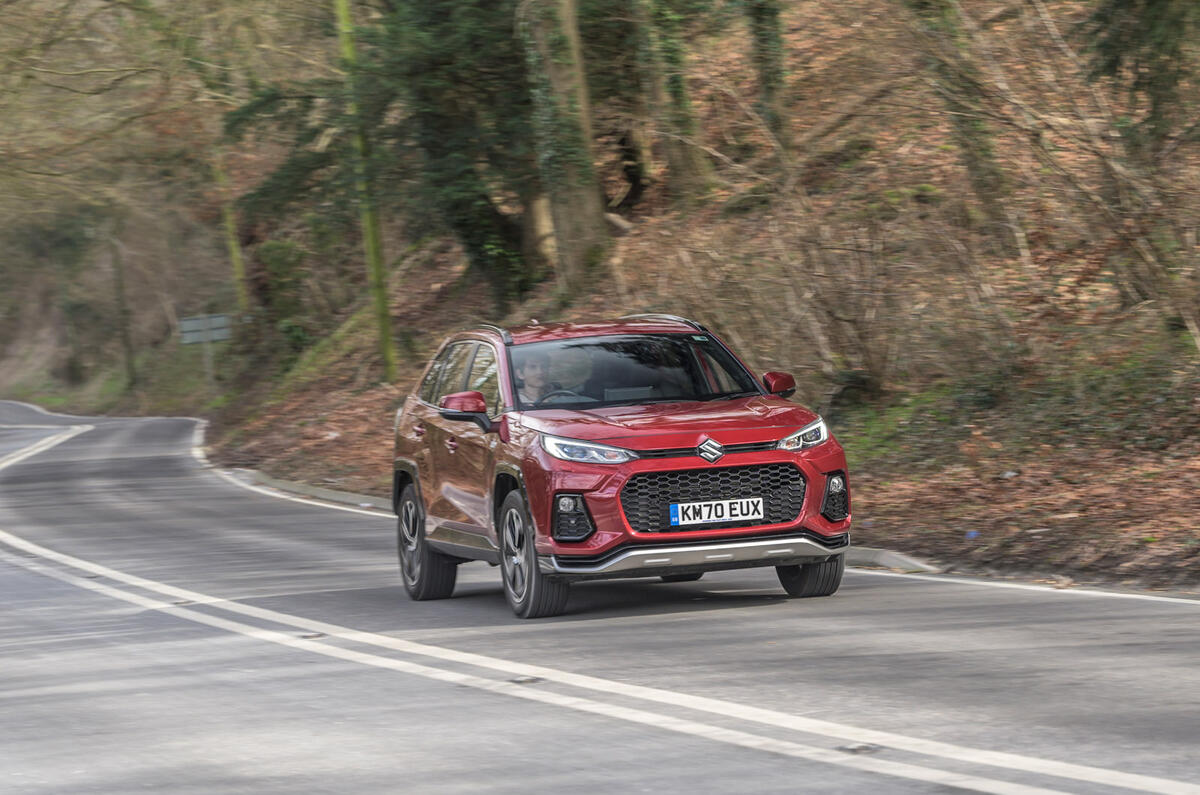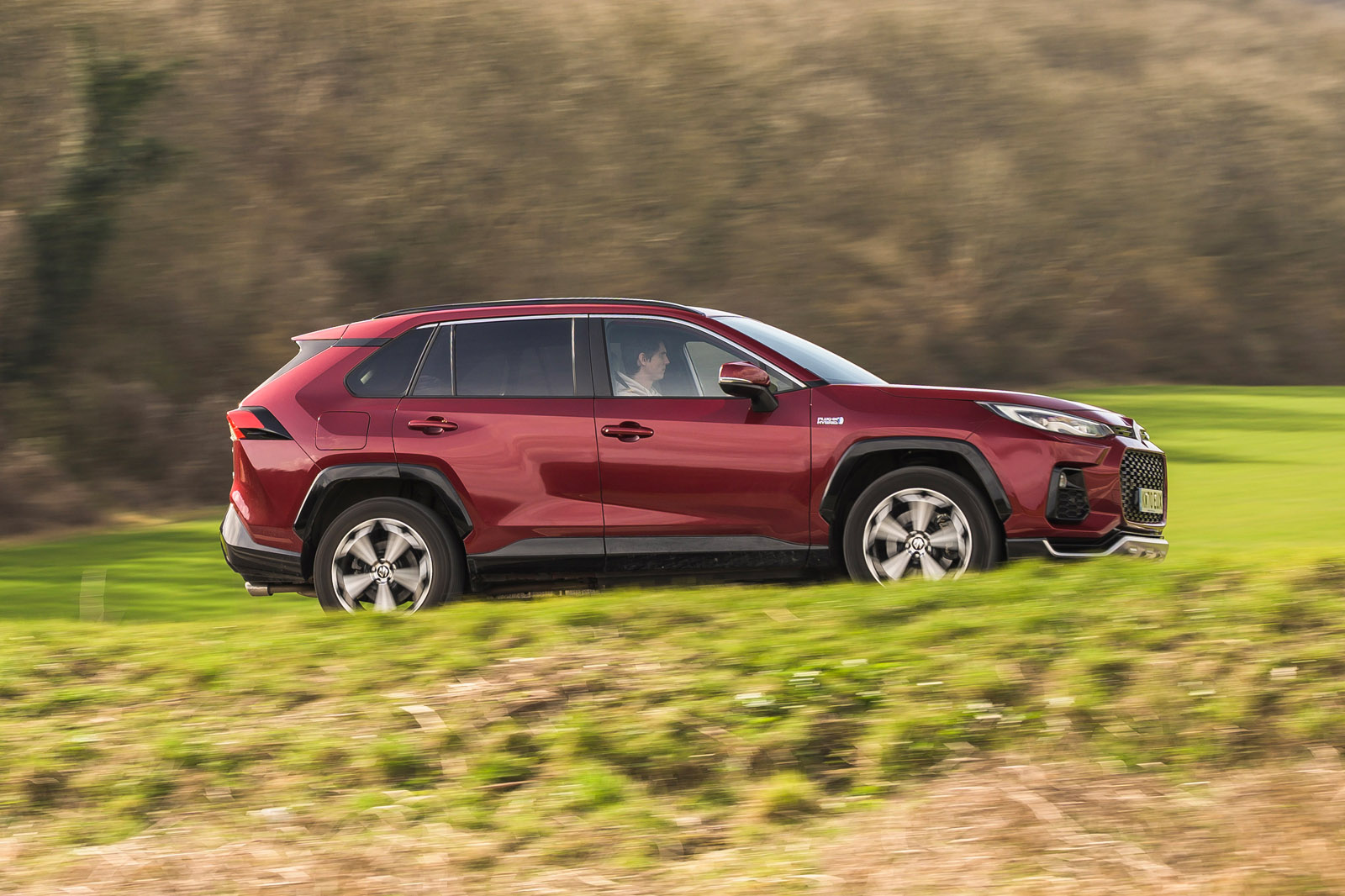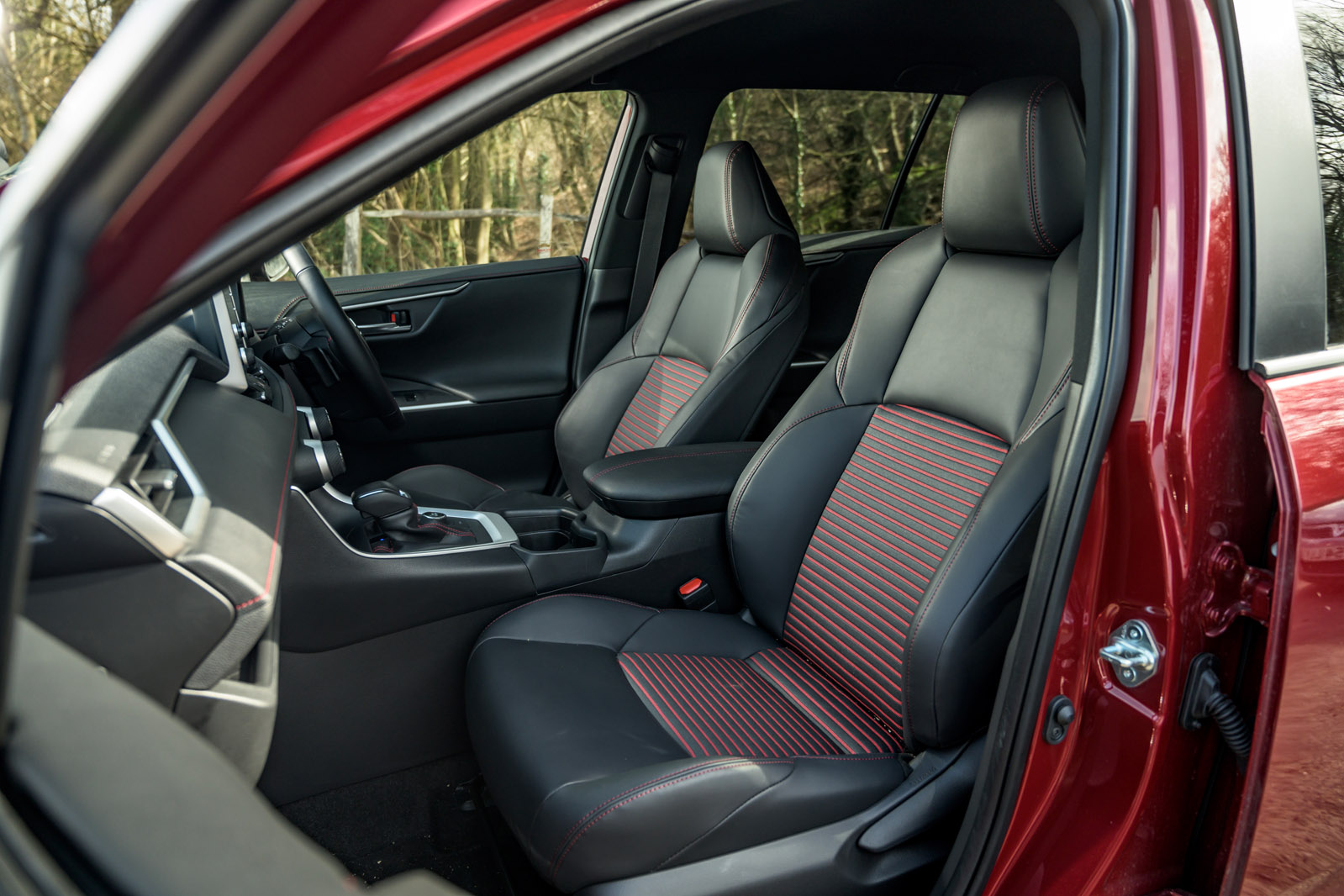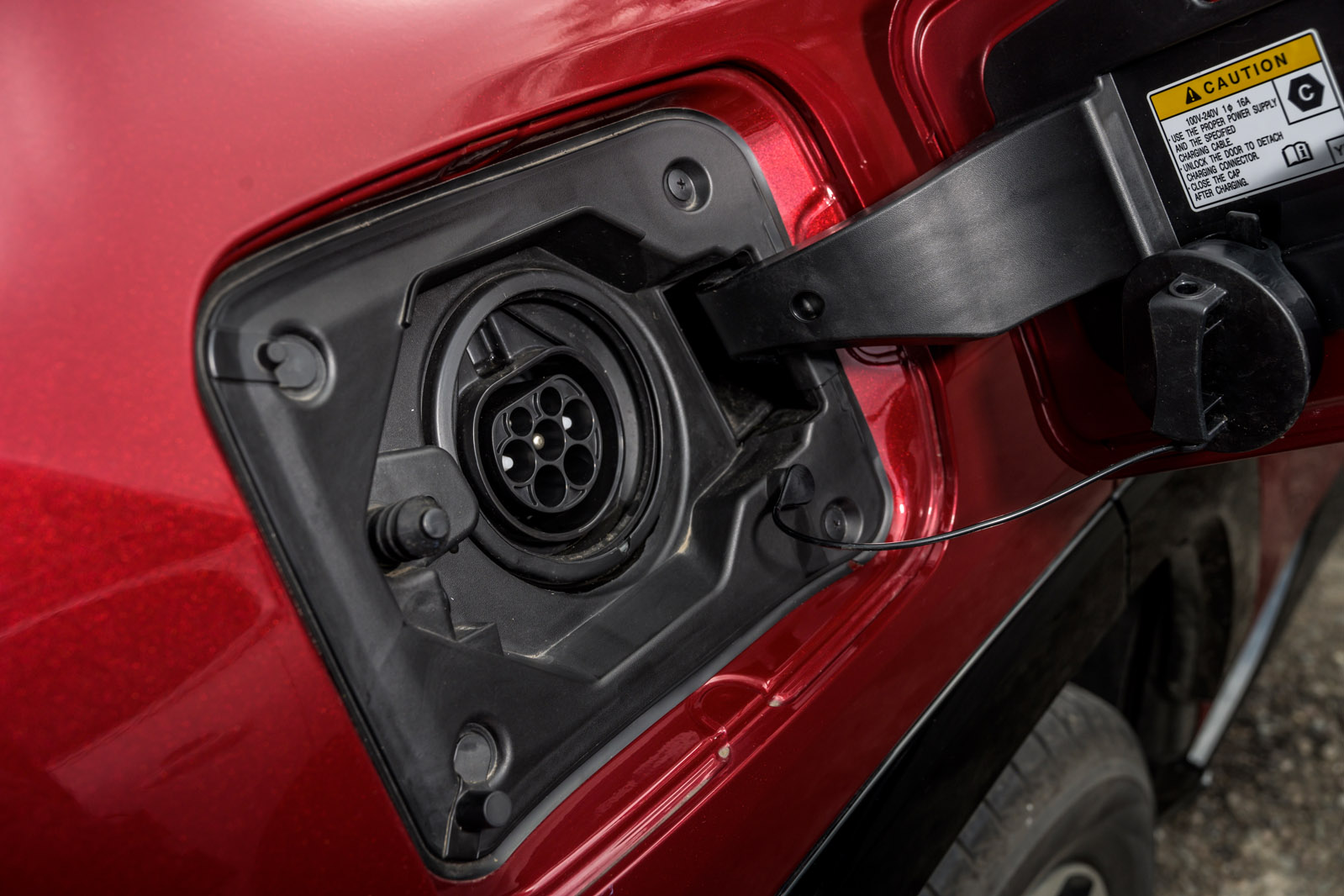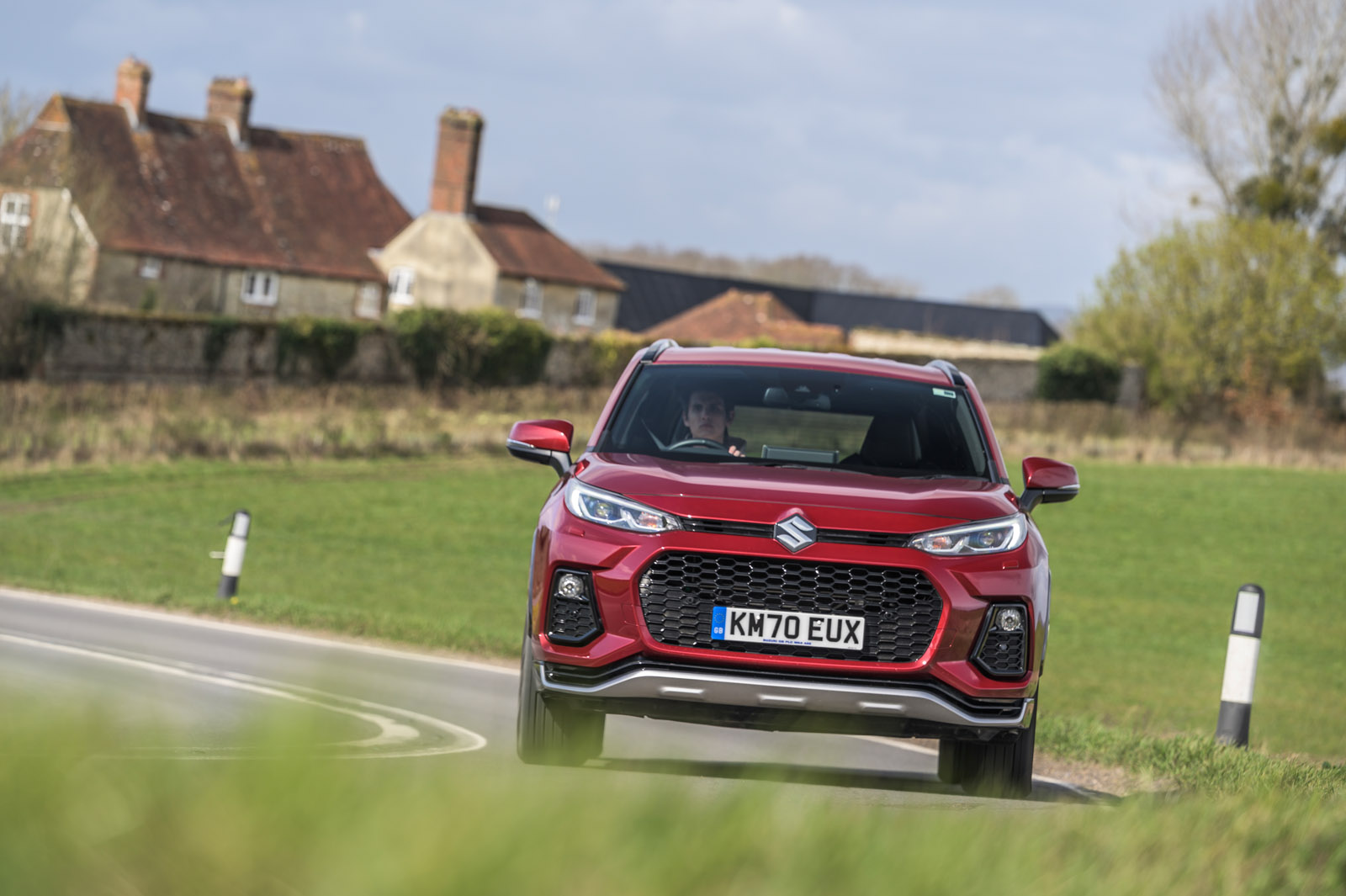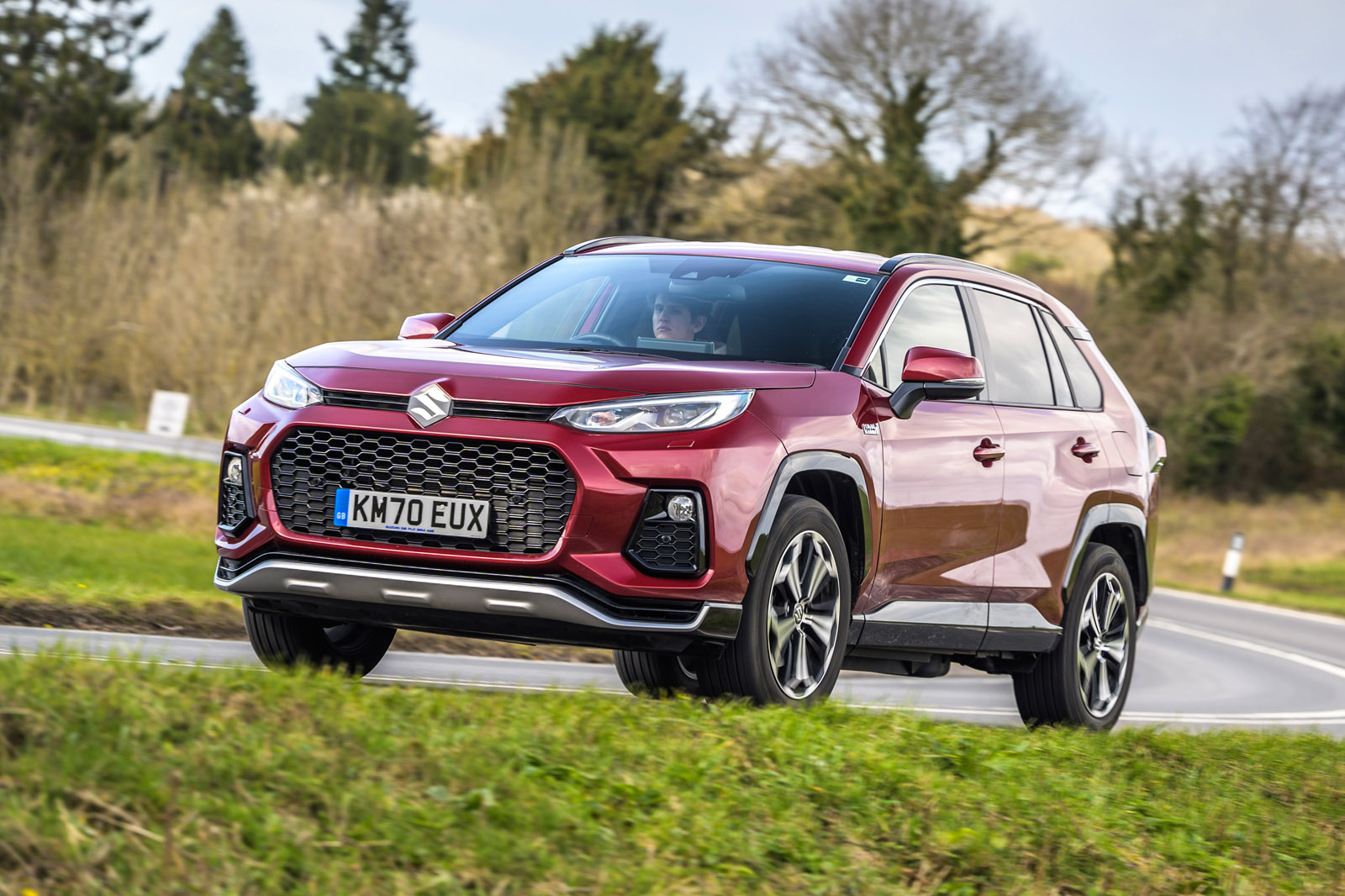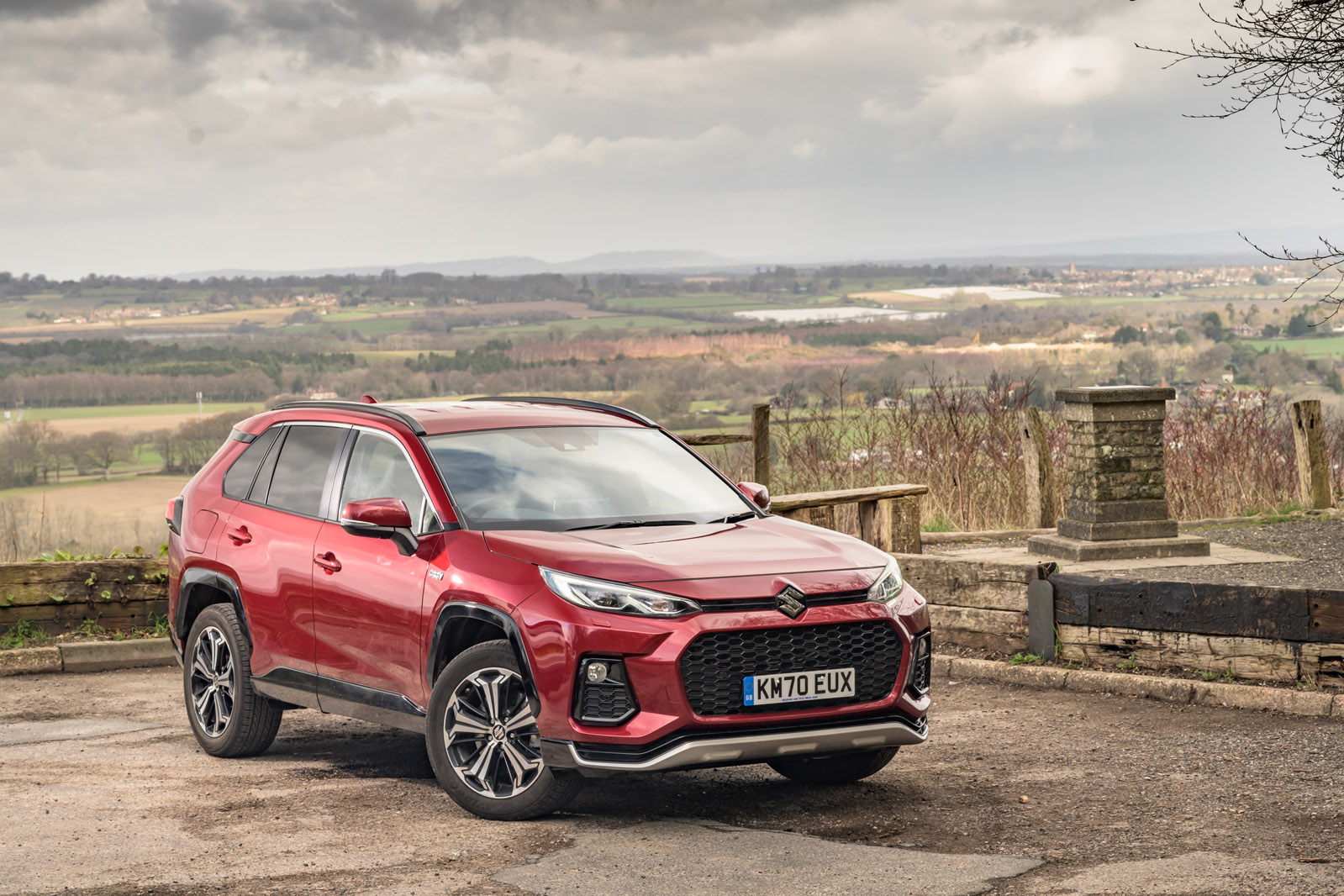Just about our only serious criticism of the cabin concerns how inviting and classy it is. It is lacking somewhat in the material richness and lustre, as well as the tactile appeal and outright material quality, you might expect for a car closing in on £50,000.
The black synthetic leather upholstery on the instrument cluster, doors and seats looks and feels just that – a bit shiny and synthetic – while some of the switchgear (notably the indicator and wiper stalks) is a little lightweight and cheap to the touch. Considering you could get a Land Rover Discovery Sport PHEV for similar money, or a posher plug-in Range Rover Evoque for not much more, that might disappoint some.
But the Suzuki’s cabin is certainly comfortable, robust and impressively functional, which should be of no surprise to those familiar with the current RAV4. In fact, with its large, rubber-framed ventilation controls and equally chunky, grabbable designs for the drive- and EV-mode selectors, you could say this car does rugged ease of use even better than the Land Rover. There are numerous slots and cubbies dotted about the cabin, and plenty of storage space for wallets, phones, gloves, keys, drink bottles… practically any odds and ends you may wish to bring with you.
Passenger space is very respectable. With a whole metre between the seat base and the roof, there’s plenty of second-row head room, and 720mm of typical rear leg room (that is with the front seat set to give the driver a metre of leg room) isn’t bad either. Thanks to its sliding bench, a Discovery Sport can offer more (up to 780mm), but two taller adults should still sit comfortably in the back of the Across on longer journeys.
Compared with the standard RAV4 Hybrid, boot space does take a hit, dropping from 580 to 490 litres in the plug-in Suzuki. Still, that load space is large enough to accommodate a couple of bigger suitcases, and the floor is flush with the opening to help make loading and unloading smooth. There’s no useful storage space beneath the floor, but there is a spacesaver spare tyre; and, in an SUV, we know which we would rather have.
Suzuki Across infotainment and sat-nav
Unlike the equivalent Toyota RAV4 PHEV, and possibly uniquely among comparable cars of its price, the Across does not feature built-in sat-nav. The 9.0in touchscreen infotainment is only really used to tune the DAB radio or activate Bluetooth pairing.
The operating system will be recognisable to anyone who has driven a recent Toyota, to whom the slightly below-par graphical sophistication won’t come as a surprise. Somewhat annoyingly, the physical ‘Nav’ shortcut button hasn’t been removed from the screen’s border. Press it and you’ll simply see a ‘function not available’ message.
Apple CarPlay and Android Auto are included as standard, though, so provided you’ve got a compatible smartphone with a generous enough data package, you may never really notice what the car is lacking.
The sound system is pretty decent, too. You’ll hardly be blown away by its clarity but it’s certainly powerful, remaining free of distortion even at high volumes.


